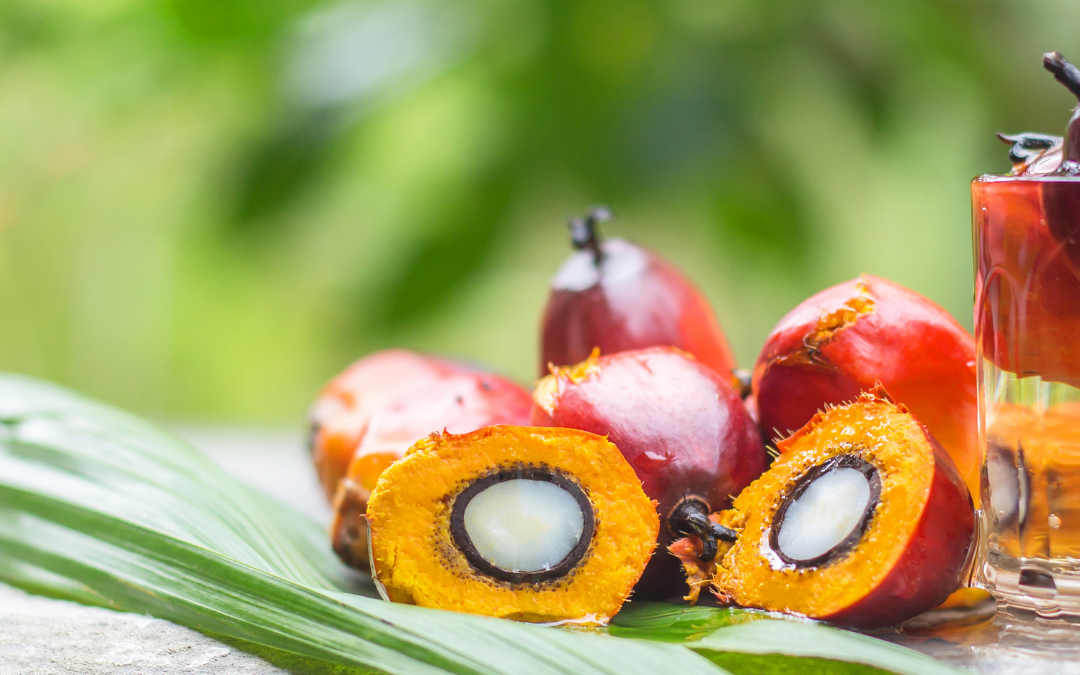Palm oil is the most popular vegetable oil, used around the world in a range of food products including bread, chocolate, and margarine. As well as food, it is also present in some form in most cosmetics and cleaning products. Palm oil is extremely popular for several reasons, such as its long shelf life as well as its lack of taste and smell. Harvested from the fruit of the African Palm tree, palm oil has a very high yield compared to other oil plants, allowing a large volume of oil to be produced from a smaller area of land, making it the cheapest of all plant oils.

Palm oil has become a controversial ingredient, mainly due to the deforestation that has been caused for land clearance for palm oil plantations. The African palm thrives in hot, wet, and humid environments with high levels of sunlight. These conditions are met in a small band along the equator and this niche is also where rainforests thrive. Because of this, countries such as Indonesia and Malaysia and other Southeast Asian countries produce most of the worlds palm oil, with Indonesia and Malaysia alone producing 84% of all palm oil in 2018. To supply the ever-increasing demand for palm oil, large areas of rainforest are cleared. Along with logging for wood products, palm oil plantations have been identified as the cause of 23% of the deforestation in Indonesia between 2001 and 2016. This deforestation has a major impact on biodiversity in these countries, with rainforests hosting the most diverse range of species of any biome, and has threatened to endanger or extinct many species, the most well-known of which being the Sumatran tiger and Bornean Orangutan. Another effect of this deforestation is the removal of the trees and destruction of peatlands; this removes their ability to function as carbon stores and releases large amounts of the previously stored CO2 into the atmosphere, contributing to the climate crisis.
While Palm oil is perceived as environmentally unfriendly, in comparison to other oil-producing plants it has much higher yields, allowing for much less land use compared to other oils, such a sunflower or soy. However, these other oil plants aren’t restricted to growing in the same environment as rainforests and so can be grown in areas with lower biodiversity. Because of this, eliminating all use of palm oil is highly debated, with demand for palm oil expected to continually increase up to the year 2050, and with large demand expected to come from major developing countries such as China and India. A reduction in people’s everyday use of palm, as well as ensuring that any palm oil consumed is sustainably sourced, is a step that can have a positive impact and help safeguard the remaining important areas of rainforest.
What can we do?
Reducing the demand for palm oil in products and making sure that, where palm oil is unavoidable, it is sustainable, can help ensure that highly biodiverse primary forests are not cut down for new palm oil plantations. The Roundtable on Sustainable Palm Oil (RSPO) is the main body certifying palm oil sources as sustainable, with sustainable plantations promising to not clear primary forests, have transparent supply chains, as well as monitor and limit their carbon emissions. Members of RSPO using certified sustainable palm oil can use RSPO’s trademark on their packaging to help consumers identify products and brands using sustainable palm oil.

If you want to avoid palm oil altogether, there are several tips to help. The first one is avoiding processed food and cooking from fresh natural ingredients such as fruit and veg. This will avoid palm oil, as well as having the benefit of being healthier than ready meals and other processed foods.
To avoid palm oil in skincare, use ethical brands that do not contain palm oil or advertise themselves as using palm oil from sustainable sources.
Finding out whether products contain palm oil and whether it is from sustainable sources this can be done quickly and easily in stores by using apps such as Impact Score Shopping; you can use it to scan barcodes and indicate whether a product is palm oil free, or, if it does contain palm oil, whether it comes from a sustainable source. Websites such as Ethical consumer and Products without Palm Oil provide guides and lists of companies and products that do not contain palm oil, or contain palm oil from ethical sources.
Follow us on social media: